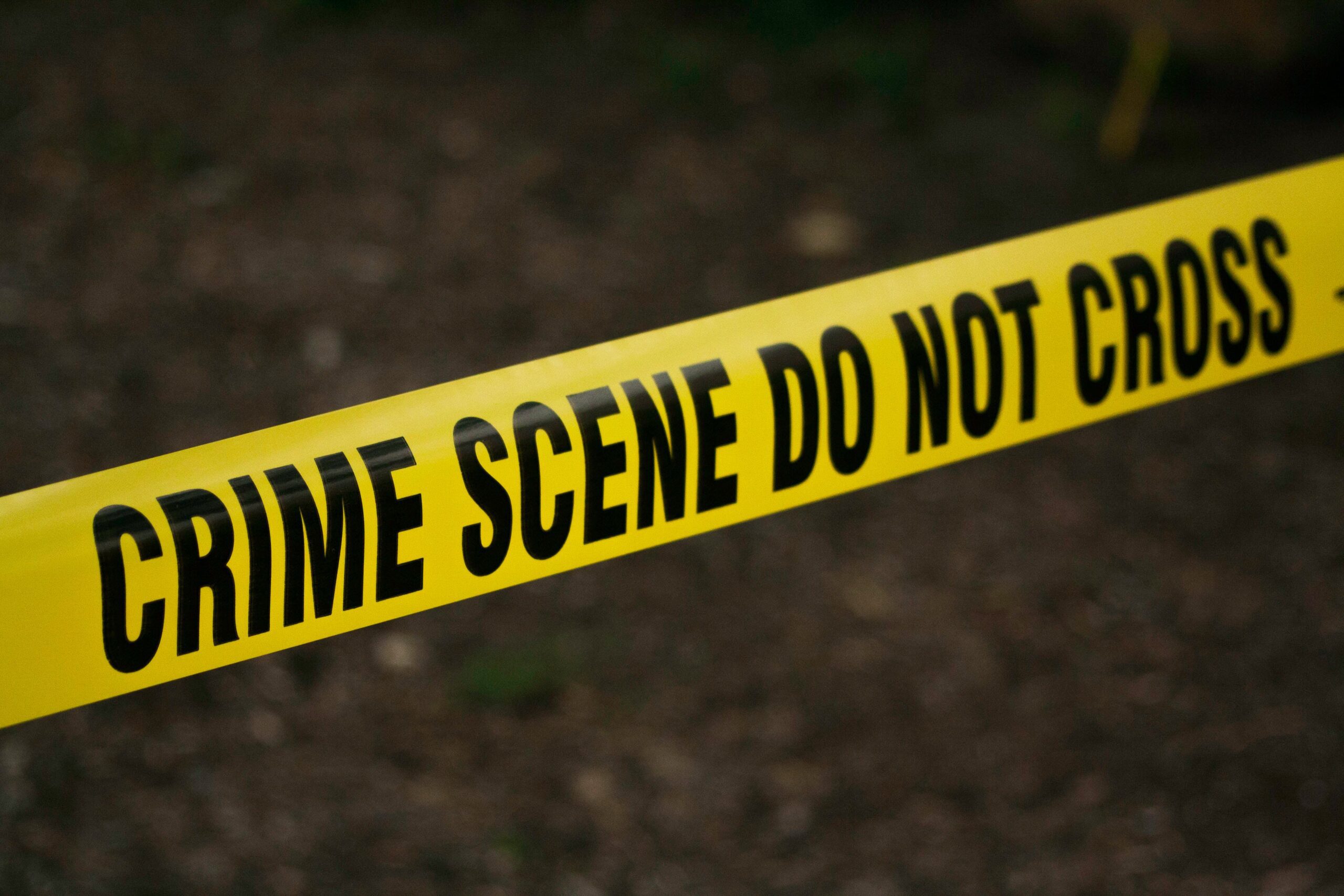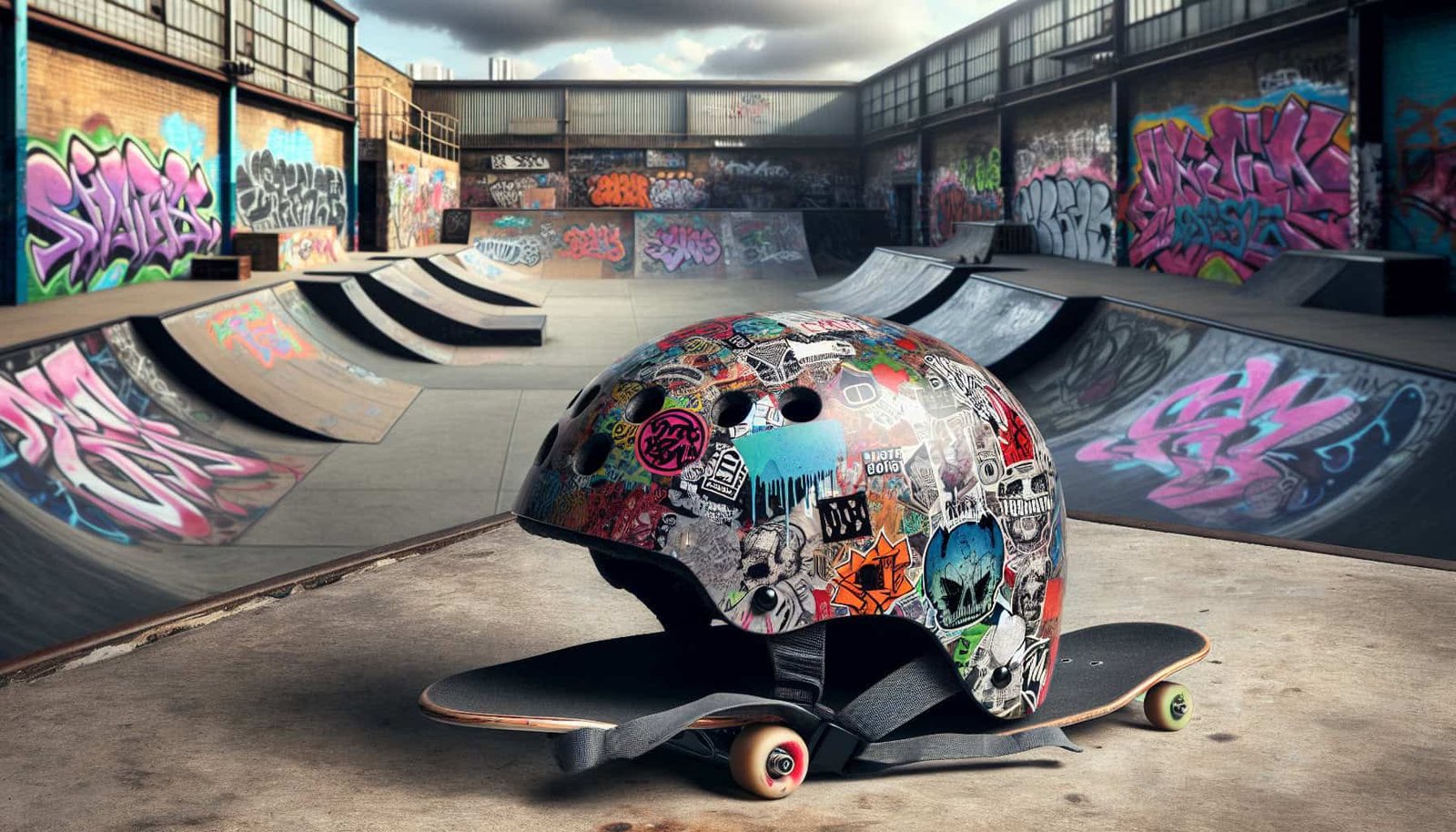Skateboarding enthusiasts, when it comes to exploring the exciting world of DIY skate spots, it’s essential to prioritize your safety. While these improvised skateboarding spots can offer a unique and thrilling experience, they also come with their fair share of risks. From checking the condition of the terrain to wearing protective gear, being mindful of pedestrians, and maintaining your skateboard, there are several key safety measures that can help ensure a smooth and enjoyable skating adventure. So, lace up your shoes, grab your board, and let’s delve into the important safety precautions that every skateboarder should keep in mind when exploring DIY skate spots.
Picking the Right DIY Skate Spot
When it comes to finding the perfect DIY skate spot, thorough research is essential. Start by asking fellow skateboarders for recommendations or searching online forums and communities for suggestions. Look for spots that suit your skill level and offer the type of terrain you enjoy skating on.
Researching the Spot
Before heading out to the spot, it’s crucial to gather as much information as possible. Check out photos or videos of the spot to get an idea of its layout and features. Read reviews or ask experienced skateboarders about the spot’s reputation and any potential challenges it may present.
Checking for Legalities
One of the most important factors to consider when choosing a DIY skate spot is its legality. Make sure to research whether skateboarding is allowed in the location you’re interested in. Some spots may be on private property, banned by local laws, or have specific regulations that need to be followed. It’s best to avoid any areas where skateboarding is prohibited to ensure your safety and avoid any legal trouble.
Assessing the Terrain
Once you’ve found a potential spot, take some time to assess the terrain before skating. Look for any potential hazards or obstacles that could pose a risk to your safety. Pay attention to the condition of the ground, ramps, rails, or other features to ensure they are sturdy and in good condition. It’s important to have a clear understanding of the skate spot’s layout and any potential challenges it may present.
Protective Gear
Protective gear is a crucial aspect of skateboarding safety. Wearing the right equipment can help prevent injuries and minimize the impact of falls.
Wearing a Helmet
A helmet is a must-have item for any skateboarder. It protects your head from potential collisions and reduces the risk of head injuries. When choosing a helmet, make sure it fits securely and conforms to safety standards. Wear your helmet properly, with the straps securely fastened and the helmet sitting snugly on your head.
Using Knee and Elbow Pads
Knee and elbow pads are essential for protecting your joints from impact injuries. They provide cushioning and support during falls or collisions. Look for pads that fit comfortably and offer adequate protection. Make sure the straps are secure and the pads don’t restrict your movement.
Utilizing Wrist Guards
Skateboarding often involves using your hands to break a fall, making wrist guards crucial for protecting your wrists from fractures or sprains. Wrist guards provide support and stability to your wrists and can prevent serious injuries. Invest in wrist guards that are comfortable and allow for proper movement.
Choosing Proper Footwear
Skateboarding requires footwear that provides excellent grip, stability, and protection. Opt for skateboarding shoes with flat soles and durable materials. The shoes should fit properly and have a good grip on the skateboard to prevent slipping. Avoid wearing sandals or shoes with loose laces, as they can increase the risk of accidents.

Preparation Before Skateboarding
Before stepping onto your skateboard, it’s important to take a few essential preparation steps to ensure a safe and enjoyable skate session.
Warming up and Stretching
Skateboarding is a physically demanding activity, so it’s important to warm up your muscles and stretch before you start. Perform dynamic stretches to activate your muscles and improve your flexibility. Focus on areas such as your legs, hips, and ankles, which are heavily utilized during skateboarding.
Checking Skateboard Equipment
Regularly inspect your skateboard to ensure it’s in optimal condition. Check for any loose bolts, cracks in the deck, or worn-out grip tape. Make sure the wheels spin smoothly and the trucks are secure. Address any necessary repairs or replacements to avoid accidents caused by faulty equipment.
Inspecting the Skate Spot
Once you arrive at the DIY skate spot, take a few minutes to inspect the area thoroughly. Look for any obstacles, debris, or potential hazards that may affect your ability to skate safely. Clear away any loose objects, branches, or litter that could interfere with your skating session.
Clearing Obstacles and Debris
In addition to clearing the skate spot of debris, it’s important to address any potential obstacles that may pose a risk. Remove or secure loose objects, such as rocks, glass, or sticks, to avoid tripping or getting injured while skating. Clearing the area of potential hazards ensures a safer and more enjoyable experience.
Skills and Techniques
Mastering essential skateboarding skills and techniques is essential for your safety while exploring DIY skate spots.
Mastering Basic Skateboarding Skills
Before attempting more advanced tricks or maneuvers, it’s crucial to master the basic skateboarding skills. This includes proper pushing, balancing, and turning techniques. Develop your ability to control your speed and balance on various terrains to ensure your safety while exploring DIY spots.
Practicing Tricks in Controlled Environments
When learning new tricks or techniques, it’s best to practice in controlled environments such as skate parks or designated areas. These environments provide the necessary safety features and equipment to minimize the risk of injuries. Once you have mastered a trick, you can gradually incorporate it into your DIY skate spot sessions.
Avoiding Stunts Beyond Abilities
It’s important to know your limits and avoid attempting tricks or stunts that are beyond your current skill level. Pushing yourself too far can lead to injuries and accidents. Focus on gradually improving your skills and techniques and avoid engaging in activities that may put you at unnecessary risk.
Learning How to Fall Safely
Falling is inevitable in skateboarding, but learning how to fall safely can help minimize injuries. Instead of instinctively reaching out with your hands, try to roll or distribute the impact across your body. This technique can help protect your wrists and reduce the risk of fractures or sprains. Practice falling in a controlled environment to develop this crucial skill.

Safety Signals and Communication
Clear communication and understanding of safety signals are essential when skateboarding, especially in group settings or crowded DIY spots.
Using Hand Signals
Hand signals are an effective way of communicating with other skateboarders. Signals such as pointing, waving, or tapping your skateboard can indicate your intended direction or alert others to potential hazards. Familiarize yourself with common hand signals and use them to communicate effectively with others on the spot.
Establishing Clear Communication
When skateboarding with others, it’s crucial to establish clear communication before starting the session. Discuss signals and gestures that will be used to communicate with each other while skating. This ensures everyone is on the same page and can help prevent accidents caused by miscommunication or misunderstanding.
Being Aware of Other Skaters
When exploring a DIY skate spot, it’s important to be aware of other skaters sharing the space. Pay attention to their movements and anticipate their actions to avoid collisions. Communicate your intentions clearly when maneuvering around others to ensure everyone can skate safely.
Keeping an Eye Out for Pedestrians
In addition to other skateboarders, be mindful of pedestrians or non-skateboarding individuals in the area. Respect their right of way and adjust your speed or path to avoid accidents. Be cautious when crossing paths with pedestrians, especially in busy or crowded areas.
Navigating the Skate Spot
Proper navigation and awareness of your surroundings are crucial for your safety when exploring DIY skate spots.
Scanning for Hazards
As you skate through the DIY spot, constantly scan your surroundings for any potential hazards. Look out for cracks, potholes, or any other irregularities in the terrain that could cause accidents. Be aware of any changes in elevation, transitions, or unexpected obstacles that may require adjustments in your approach.
Understanding the Flow of the Spot
Each DIY skate spot has its own unique flow and rhythm. Take some time to observe and understand the natural flow of the spot before attempting tricks or maneuvers. Avoid abruptly cutting across the flow, as it can disrupt the rhythm and potentially lead to collisions.
Maintaining a Safe Speed
While it can be tempting to push yourself to go faster, it’s crucial to maintain a safe speed while navigating a DIY spot. Keep your speed within your comfort zone and stay in control of your skateboard. Avoid reckless or excessive speed, as it can make it difficult to react to unexpected obstacles or changes in the spot.
Avoiding Collisions
One of the primary objectives of skateboarding is to avoid collisions with objects or other individuals on the spot. Maintain a safe distance from other skaters, give priority to those already skating a line, and use caution when changing your trajectory or attempting tricks. By being aware of your surroundings and making smart decisions, you can minimize the risk of accidents.

Environmental Considerations
Environmental factors can significantly impact your safety while exploring DIY skate spots. Keep these considerations in mind before heading out.
Checking Weather Conditions
Before skating, check the weather conditions in your area. Skateboarding on wet or slippery surfaces can increase the risk of accidents, so it’s best to avoid skating after rain or during inclement weather. Be aware of environmental conditions such as strong winds, extreme temperatures, or poor visibility, which can also affect your safety.
Avoiding Skating on Wet Surfaces
Wet surfaces can be extremely hazardous for skateboarding. Water reduces the grip between your skateboard and the ground, increasing the chances of slipping and losing control. Wet pavement or surfaces can also hide potential hazards or obstacles. It’s best to wait until the surface is dry before skating to ensure your safety.
Being Wary of Uneven Terrain
Uneven terrain, such as cracked pavement, potholes, or bumps, can be dangerous for skateboarding. It can cause your skateboard to wobble or lose balance, leading to falls or accidents. Be cautious when venturing into areas with uneven terrain and adjust your speed and approach accordingly.
Assessing Lighting Conditions
If you plan to skate during early mornings or evenings when lighting conditions may be limited, make sure the spot is well-lit or has sufficient lighting nearby. Poor visibility can make it difficult to spot potential hazards or changes in the terrain, increasing the chances of accidents. Always prioritize safety and ensure proper lighting when skating in low-light conditions.
Group Dynamics
Skateboarding with friends or in a group can be a fun and enjoyable experience. Here are some safety measures to consider when skateboarding in a group.
Skateboarding with Friends
Skateboarding with friends can enhance the overall experience and provide support and encouragement. It’s best to skate with individuals of similar skill levels to avoid potential collisions or accidents caused by different speeds or abilities. Stick together as a group and communicate effectively to ensure everyone’s safety.
Ensuring Proper Supervision
If skateboarding with younger or less experienced individuals, ensure proper supervision from someone knowledgeable and skilled in skateboarding. They can provide guidance, offer advice, and intervene if necessary to prevent accidents or injuries.
Respecting Others’ Turns
When skateboarding in a group, it’s important to take turns and respect each other’s time on the spot. Allow other skaters to complete their line or trick before attempting your own. This ensures a smooth flow and eliminates the risk of collisions or interruptions that may lead to accidents.
Watching Out for Each Other
Part of skateboarding in a group is looking out for one another. Maintain visual contact with your fellow skaters and be aware of their movements and positions. Offer assistance or warn others of potential hazards or obstacles to prevent accidents. Building a supportive and communicative group dynamic can significantly contribute to everyone’s safety.

Safety Measures for DIY Spot Construction
For skateboarders interested in constructing their own DIY skate spots, it’s important to follow safety measures to ensure a safe and functional setup.
Understanding DIY Spot Construction Risks
Constructing a DIY skate spot involves various risks, including the use of power tools, construction materials, and potential structural weaknesses. It’s important to educate yourself on the proper construction techniques and potential safety hazards associated with building skateboarding features.
Using Proper Materials and Tools
When building a DIY spot, ensure you are using appropriate materials and tools for each component. Research and follow construction guidelines to ensure the structural integrity and safety of the features. Use equipment and tools correctly, and prioritize your own safety during the construction process.
Inspecting the Construction
Once the DIY spot is constructed, thoroughly inspect the features for any potential issues or weaknesses. Check for loose bolts, cracks, or signs of instability. Address any necessary repairs or improvements to ensure the spot remains safe and functional for skateboarding.
Regular Maintenance and Repairs
Maintenance is essential to keep a DIY spot in safe and usable condition. Regularly inspect the spot for signs of wear and tear, and address any repairs promptly. This includes replacing worn-out or damaged materials, tightening loose bolts, and fixing any structural issues. By keeping up with regular maintenance, you can ensure the safety and longevity of the DIY spot.
Emergency Preparedness
While skateboarding, it’s important to be prepared for potential emergencies or accidents. Familiarize yourself with basic first aid practices and have a plan in place.
Knowing First Aid and CPR
Having basic knowledge of first aid and CPR can be invaluable in case of an emergency. Take a first aid and CPR course to learn essential skills such as dealing with fractures, sprains, cuts, or head injuries. Knowing how to respond effectively can make a significant difference in the outcome of an accident.
Carrying a Basic First Aid Kit
Always carry a basic first aid kit with you when skateboarding. The kit should include essentials such as bandages, antiseptic wipes, gauze, adhesive tape, and pain relievers. Be familiar with the contents of your kit and know how to use them properly in case of minor injuries.
Emergency Contact Information
Store emergency contact information on your phone or carry it in your wallet or backpack. Include the contact numbers of family members, friends, or healthcare professionals who can be contacted in case of an emergency. Having this information readily available can expedite the process of getting help when needed.
Awareness of Nearby Medical Facilities
When exploring DIY skate spots in unfamiliar areas, it’s essential to be aware of the location of nearby medical facilities. Research and note the addresses of hospitals, urgent care centers, or clinics in the vicinity. In case of a serious injury, knowing the nearest medical facility can help ensure prompt medical attention.
By following these safety measures and guidelines, skateboarders can enjoy their time exploring DIY skate spots while minimizing the risk of accidents or injuries. Always prioritize safety, wear appropriate protective gear, and practice responsible and considerate skateboarding. Happy skating!


